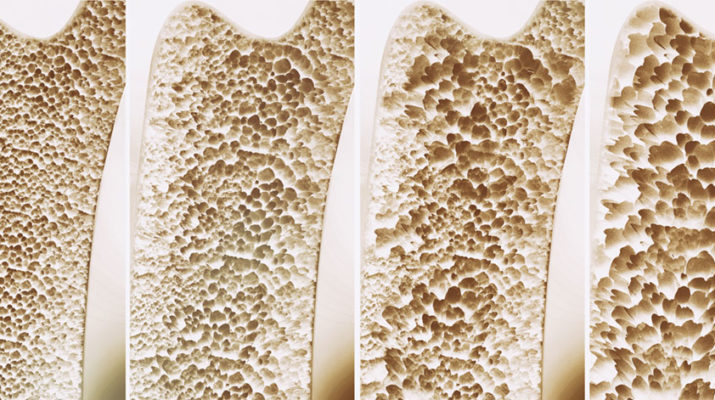Men also need to keep bones strong, however women’s already smaller bones can get even weaker, especially as estrogen levels dip because of menopause
By Deborah Jeanne Sergeant
Maintaining bone health into later life is important for women who want to stay healthy and independent.
Fractures after falls represent a leading cause of hospitalization among frail elderly people. According to the National Institutes of Health, people 65 and older represent 86% of those who suffer hip fractures. With normal care, the one-year mortality after having a hip fracture is between 14% and 58%.
Of course, men also need to keep bones strong; however, it is especially crucial for women. As estrogen levels dip because of menopause, women’s already smaller bones can get even weaker. Diet, supplementation and exercise all play roles in bone health.
“You have some bone and muscle loss as you age, but if you keep up with things, it’s not a foregone conclusion that your bones are going to deteriorate to the point where you’ll have osteoporosis,” said Mary Jo Parker, registered dietitian and owner of Nutrition and Counseling Services Nutritionist in Buffalo.
The traditional approach is consuming more dairy sources of calcium to help minimize bone loss; however, many non-dairy foods also contain calcium.
Plant sources of calcium include poppy, sesame, celery and chia seeds; sardines and canned salmon; dark greens like collard greens and spinach; almonds; soy sources, like edamame and tofu; and maple syrup, nearly close to the same amount of calcium per volume as milk, although as a high calorie food, maple syrup should be eaten in moderation.
In addition to calcium, strong bones require other minerals. These include magnesium, boron, strontium, copper, zinc, manganese and chromium, many of which are available in the foods listed above.
“People aren’t as familiar with good sources of those nutrients,” Parker said.
In addition to calcium, nuts, seeds, and dark leafy green vegetables are also sources of many minerals.
Since vitamin D is generated by sun exposure, it’s difficult for people living in the North to maintain adequate levels of D in the wintertime. That’s why Parker recommends supplementing. Many D supplements come paired with other bone-building minerals.
Heather M. Ochs-Balcom, an associate professor of epidemiology at the University at Buffalo, said that in addition to a better diet and possibly supplements, “our recent study suggests that sleep is associated with lower bone mineral density; this gives us another reason to strive to get the recommended seven hours of sleep per night.”
Since sufficient sleep is only good for the body, it’s worth it to get enough rest.
Och-Balcom added, “regularly exercising and lifting weights can all help to prevent osteoporosis.”
As with dietary improvement, it’s never too late to start. Weight-bearing exercise includes activities such as walking and weightlifting. Many people are surprised at the latter; however, Brian DeLuca, physical therapist, said that even minimal resistance with bands can help — it doesn’t require hefting heavy weights or living at the gym.
DeLuca is also a certified strength conditioning specialist and director of physical therapy at UBMD Orthopaedics & Sports Medicine in Cheektowaga.
“Most women can achieve benefit through body weight training,” he said. “The beauty is you can do it at home, or through virtual training through apps if you’re disciplined enough. There are lots of resources available away from the gym where you don’t need equipment.”
Photo: A 3-D rendering showing the progression of osteoporosis.

